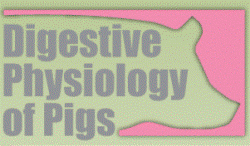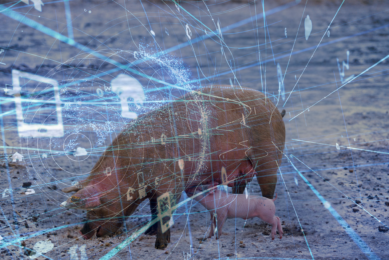Gut chemosensing: integrating nutrition and metabolism in pigs

Dr. Ignacio Ipharraguerre, R&D Leader of flavour specialist Lucta will discuss Gut Chemosensing in a pre-conference to a symposium on digestive physiology in pigs held in Colorado, USA in May.
The 12th International Symposium on Digestive Physiology of Pigs will be held from May 29 to June 1st in Colorado, USA.
This event has grown to become the premier event where discussions focus specifically on various aspects of digestive physiology.
Lucta will sponsor the Pre-Conference Symposium under the title Gut Chemosensing. To help define the concept the company has reproduced an interview held with Dr. Ignacio Ipharraguerre, R&D Leader of Lucta SA and Co-Chair of the Symposium.
Dr Ipharraguerre, what exactly does "gut chemosensing" mean?
The gastrointestinal tract is capable of detecting changes in the chemical composition of its luminal contents caused by food ingestion. This triggers a wide array of physiological responses including gut secretions and motility.
Even though we knew this for years, scientists have just begun to uncover the mechanism by which the gut "senses" nutrients and other non-nutritive, chemical compounds. Very recent studies provide the first recognition that the gut is equipped with a number of receptors linked to signalling pathways like the ones that mediate taste perception.
In essence, these receptors are molecular structures that function as "chemical transducers". In response to nutrients and other compounds, these receptors enable the activation of intestinal afferent nerves and mucosa cells that control the functioning of the gut.
In other words, gut chemosensing can be viewed as the interface responsible for generating and conveying information to the brain and rest of the body about the gastrointestinal luminal environment.
Lucta recently discovered the umami taste receptor in the pig’s tongue. Is this in any way related to the gut chemosensing concept being studied?
Yes, it is. Indeed, over the last 5 years we have increased our research efforts in hopes of better understanding the role that the umami taste receptor – as well as other receptors – play in mediating gut sensing in pigs.
In a nutshell, this research indicates that the umami and sweet receptors are present in the gut of pigs and their abundance depends on factors like the section of the gut, age, diet, and weaning. More work is underway.
In a way, it seems that you imply that the gut has a certain capability to "taste" some substances and react to those in ways we don’t yet understand. Is this correct?
To a certain extent this is right. According to our research, at least part of the gut’s capability to sense chemicals is granted by a molecular system quite similar to the one that mediates taste perception.
That is, taste receptors and other cellular components of the downstream-signalling-pathway present in the gut are exactly the same as the ones found in taste buds. The way they function, however, is somewhat different.
For instance, activation of the gut’s umami receptor leads to the release of regulatory peptides by endocrine cells located in the gut mucosa (that is, enteroendocrine cells).
This is a unique feature of this chemosensory system. It is important to note that the gut’s chemosensory system is apparently composed of receptors and signalling elements that are not found in taste cells and, therefore, are not active in taste perception. In this regard, gut chemosensing is a broader concept than taste perception.
Exciting as it seems, do you anticipate some "practical" outcome from this research area with potential interest for nutritionists or pig producers?
In human medicine and pharmacology, gut chemosensing is receiving considerable attention because of the potential that this area holds for the development of novel therapies to treat pathologies like short bowel disease, diabetes, or obesity, to name a few.
As progress is made in our understanding of gut chemosensing in general, and in particular in animal species of interest, it is likely that opportunities for developing technologies that specifically improve gut integrity or manage feed intake at critical times, will be indentified.
We believe, however, that much more research is needed until such expectations can be realized. This a major reason for Lucta to organize this Symposium. We intend to bring awareness in this area and foster discussion and further work.
Three years ago Lucta sponsored the symposium on Voluntary Feed Intake, also a pre-conference event for the 11th DPP, and attendance was impressive. What are your expectations for the Gut Chemosensing Symposium?
Because of the novelty and relevance of the symposium theme, plus the fact that it is closely related to the program of the 12th DPP conference, we actually expect to exceed the attendance to the previous edition of the Preconference Symposium.











